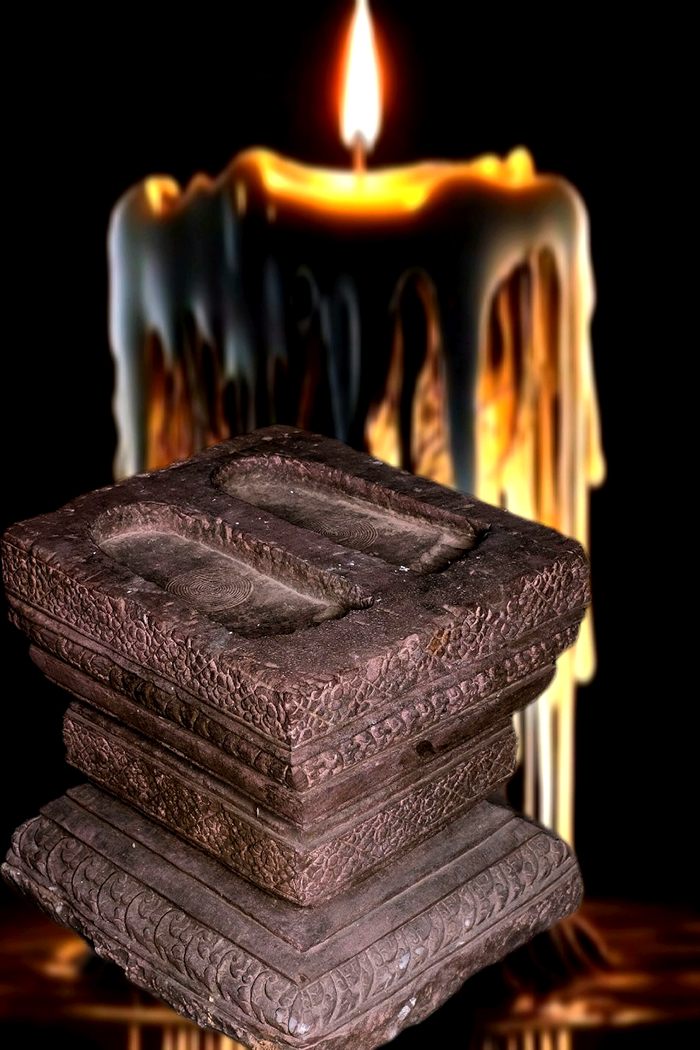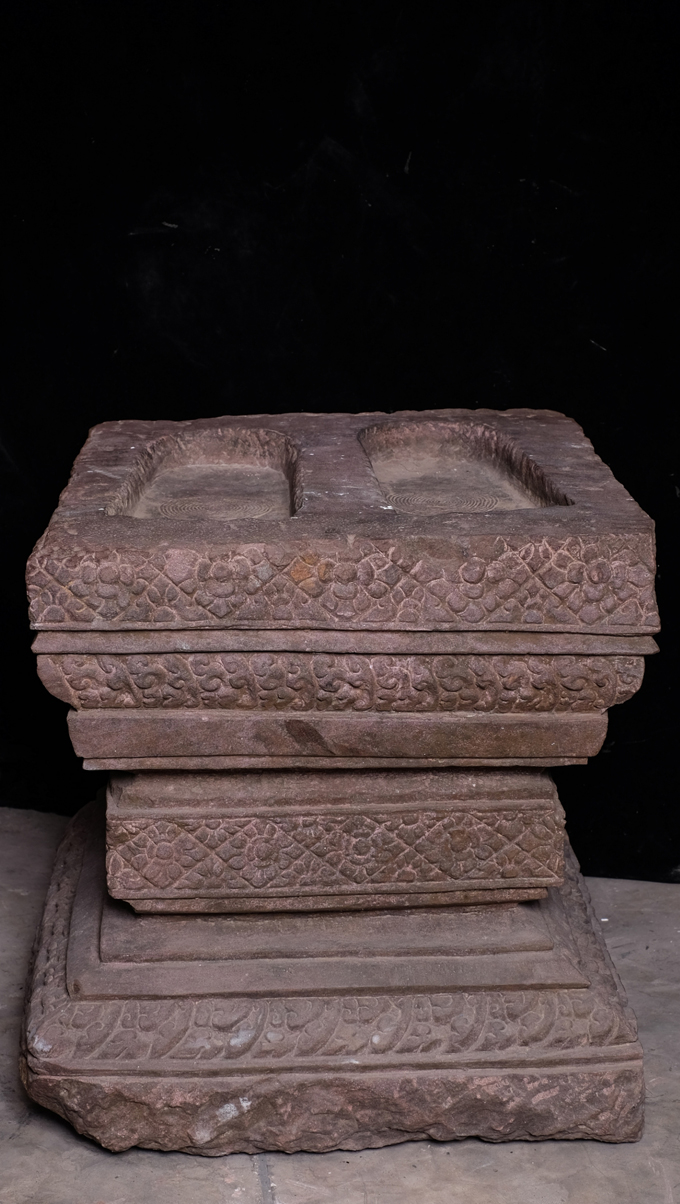




.........Antique Buddha Sculture , Buddha Statues , Buddha Images and Art.........
......Premier online dealers in Antique Buddha Statues.........
Extremely Rare 12C Sandstone Khmer Footprint #K.2606


Extremely Rare 12C Sandstone Khmer Footprint #K.2606
CAT NO: K.2606
Buddha's footprints (Sanskrit: Buddhapada) are Buddhist icons shaped like an imprint of Gautama Buddha's foot or both feet. There are two forms: natural, as found in stone or rock, and those made artificially.
Many of the "natural" ones are acknowledged not to be genuine footprints of the Buddha, but rather replicas or representations of them, which can be considered cetiya (Buddhist relics) and also an early aniconic and symbolic representation of the Buddha.The footprints of Buddha are on the path from aniconic to iconic which starts at symbols like the wheel and moves to statues of Buddha. His footprints are meant to remind us that Buddha was present on earth and left a spiritual path to be followed.
They are special as they are the only artifacts that give Buddha a physical presence on earth as they are actual depressions in the earth. A depression atop Sri padaya in Sri Lanka is among
the largest and most famous footprint Buddhist legend holds that during his lifetime the Buddha flew to Sri Lanka and left his footprint on Sri padaya to indicate the importance of Sri Lanka
as the perpetuator of his teachings, and also left footprints in all lands where his teachings would be acknowledgedIn Thailand, the most important of these "natural" footprints embedded in rock is at Phra Phutthabat in central Thailand. To clarify a footprint of the Buddha is a concave image of his foot (or feet),
supposed to have been left by him on earth to purposefully mark his passage over a particular spot. The images of the Buddha’s feet are convex images which represent the actual soles of his feet, with all their characteristics.
Following the traditional triple division of the cetiya, we can assume that the first form of the image of the Buddha’s feet – the concave one – is a sort of paribhogika element, since it is indissolubly connected with the Tathagata himself.
The second one can be thought as an uddissaka element, since it was created by a devoted artist (or artists) to commemorate the Buddha, taking as its model a genuine footprint.
But we can think of this second group, too, as a "paribhogika by supposition", as noted by Chutiwongs. According to French scholar Paul Mus, the footprints were the type of magical objects which "enables one to act at a distance on people related to it. For more details to read please click to: https://en.wikipedia.org/wiki/Buddha_footprint

PERIOD: 12th century
COUNTRY OF ORIGIN:Khmer

CONSTRUCTION: Sandstone
RARITY AND CONDITION: Extremely Rare, good condition, some possible cleaning
/ restoration, expected day to day wear (see photos)

HEIGHT IN INCHES:17" ( 43CM )
WIDTH / LENGTH: 17.8" ( 45CM ) DEEP: 17.8" ( 45CM )
WEIGHT IN KILOS:Over 50 klg.

PROVENANCE: From the sale of a private estate in UK.
EVALUATION APPRAISAL:An imposing piece with very strong presence
To order or check availability please email us by clicking here
